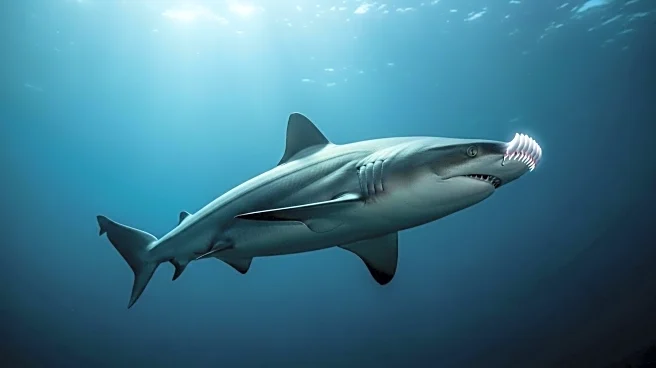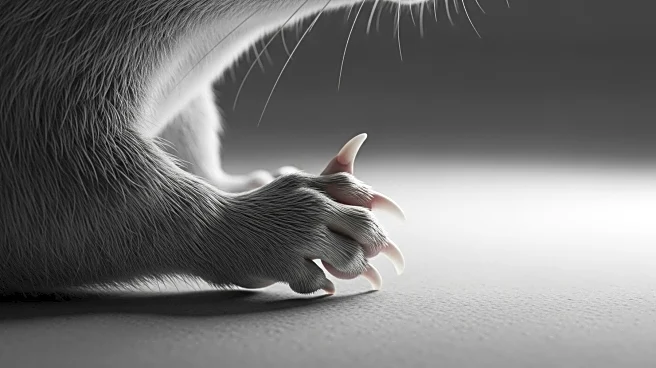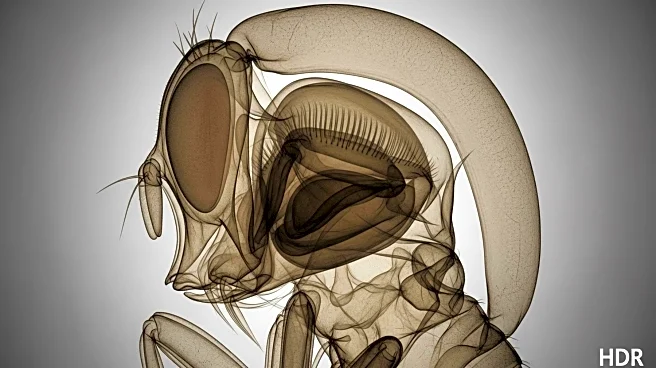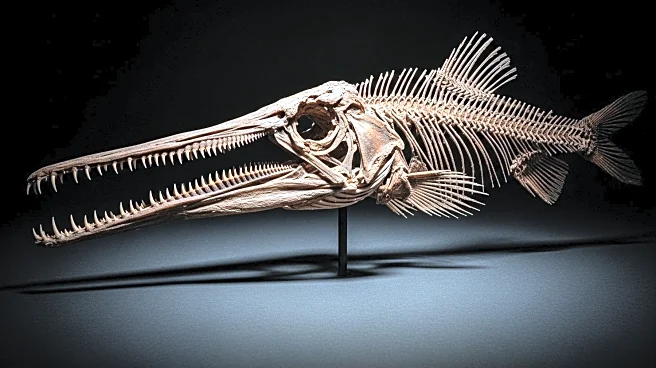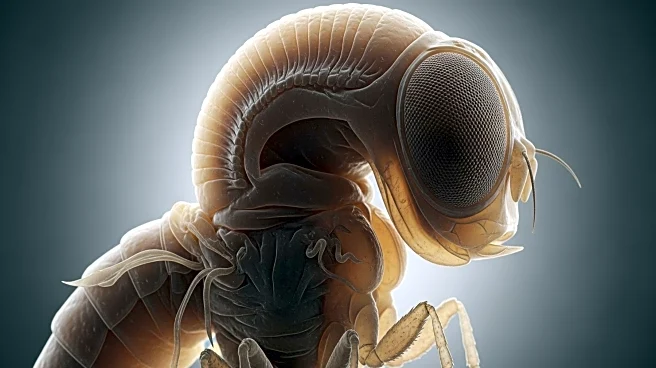What's Happening?
Recent research published in the Proceedings of the National Academy of Sciences has uncovered that male ghost sharks, also known as chimaeras, possess a unique appendage on their foreheads called a tenaculum, which is equipped with retractable teeth. This appendage is believed to be used during mating to grasp females, similar to how sharks use their mouths. The study involved examining both fossils and living specimens, revealing that the tenaculum teeth are genetically similar to oral teeth. This discovery highlights the evolutionary adaptability of tooth development in these deep-sea creatures.
Why It's Important?
The findings provide insight into the evolutionary processes that allow species to adapt their physical features for reproductive purposes. Understanding the genetic basis for tooth development outside the mouth could have broader implications for evolutionary biology and the study of genetic expression. This research also contributes to the knowledge of deep-sea biodiversity and the unique adaptations of marine life, which can inform conservation efforts and the study of marine ecosystems.
What's Next?
Further research may explore the genetic mechanisms that enable the development of teeth outside the mouth in ghost sharks, potentially leading to discoveries about similar adaptations in other species. Scientists may also investigate the ecological role of ghost sharks and their mating behaviors to better understand their impact on marine environments.
Beyond the Headlines
The study exemplifies evolutionary 'bricolage,' where existing genetic programs are repurposed for new functions. This concept could lead to a deeper understanding of how evolutionary pressures shape the development of physical traits in various species, offering insights into the adaptability and resilience of life forms in changing environments.
